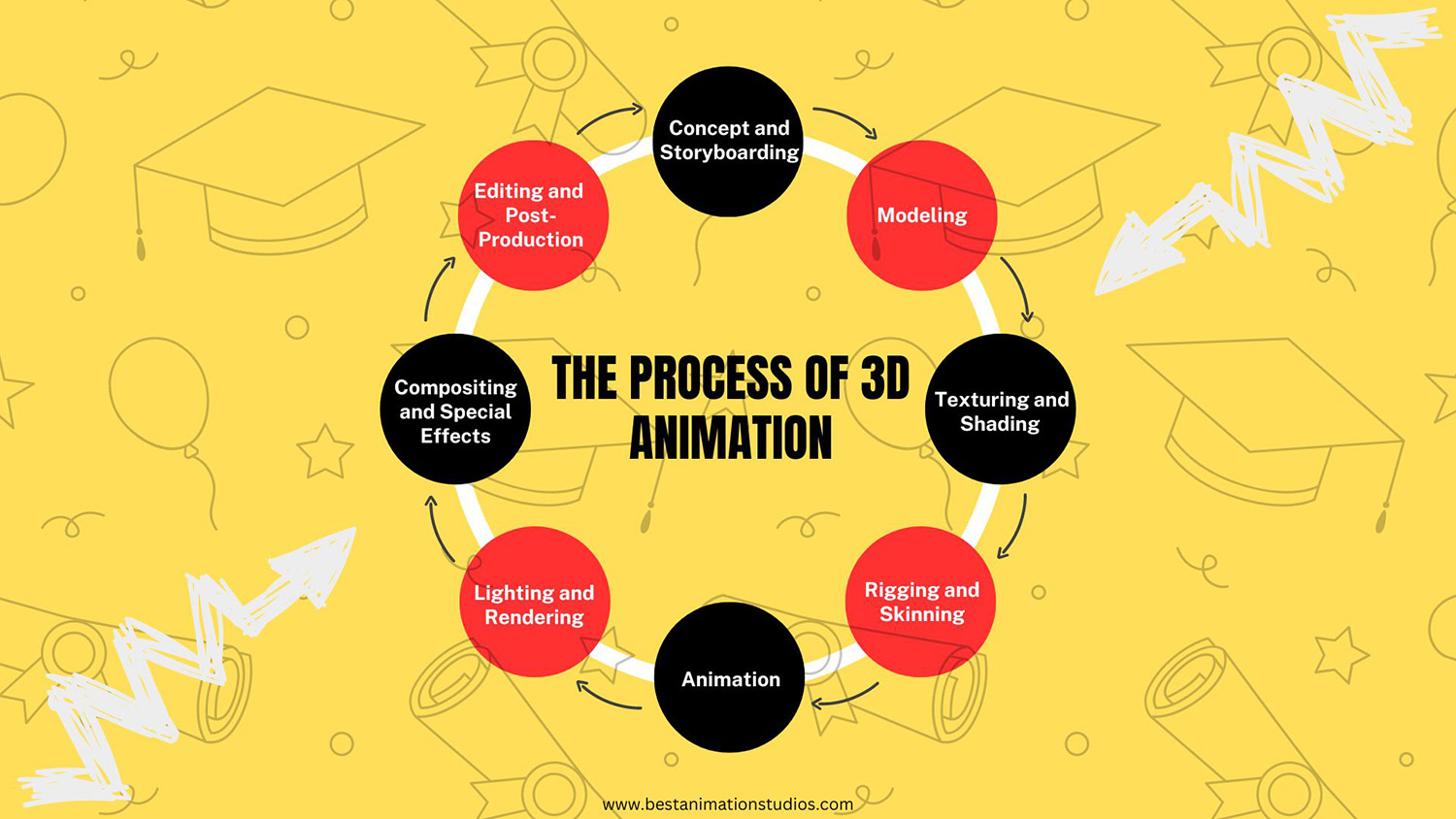
3D animation is a lively and appealing art form that uses computer-generated imagery (CGI) to bring characters and environments to life. Unlike 2D animation, where each frame is drawn by hand, 3D animation uses digital models that can move and adjust in a three-dimensional space. This makes it possible to create more realistic and flexible animations. Because of these advantages, 3D animation is widely used in movies, video games, and advertisements. It allows creators to tell stories in a visually stunning and dynamic way, capturing the audience's attention with lifelike movements and detailed environments.
In movies, 3D animation can create everything from realistic characters to fantastical worlds that would be impossible to film in real life. In video games, it enhances the gaming experience by making characters and settings more immersive and interactive. Advertisements benefit from 3D animation by producing eye-catching visuals that stand out and engage viewers.
Overall, 3D animation has revolutionized the way stories are told and products are advertised. Its ability to create detailed, realistic, and imaginative visuals makes it an invaluable tool in modern media, continually pushing the boundaries of what is possible in animation.
The Stages of 3D Animation
The process of creating 3D animation is complex and involves several key stages:⦁ Concept and Storyboarding :
The animation process starts with an idea and a concept that builds the base of this project. This idea is then transformed into a storyboard, which is a graphic representation of the whole story specifying its sequence of events, camera angles, and principal actions. Storyboards are important in mapping out how the story will go and making sure that all members of the team have an idea of where they are heading.
⦁ Modeling :
Artists create 3D objects for the animation in the modeling phase. This includes producing characters, props, and environments using different animation software such as Blender, Maya, or 3ds Max. The mesh is how the models are constructed; it has vertices, edges, and faces that show the shape of an object.
⦁ Texturing and Shading :
Adding color, patterns, and surface details gives the 3D models texture. However, shading is responsible for how they interact with light. The realism of models is greatly improved when these two techniques are combined thereby making them more life-like. There are countless ways in which artists can create different textures using texture maps or shaders. For instance, it can be used for creating a sense of roughness commonly seen on stone walls or even the shiny look of polished floor.
⦁ Rigging and Skinning :
Developing a 3-D model skeleton which allows these models to be mobile is involved in rigging. The rig consists of a series of linked bones that may be modified to form various poses and actions. To establish that the mesh contorts as these bones proceed, it is necessary to skin this 3D model to this rig.
⦁ Animation :
This is where the magic happens. Animators use the rigged models to create movement, crafting each frame to ensure smooth and realistic motion. Keyframing, the process of setting important positions and letting the software interpolate the in-between frames, is a common technique. Other methods include motion capture, where real human movements are recorded and translated into the animation.
⦁ Lighting and Rendering :
The positioning of illuminating objects plays a key role in determining the right mood and feel of an environment in any play or movie scene. Shadows, highlights and depth are established when digital illuminants are located within an environment rendered using 3D computer graphics technology. This final phase involves calculating all information related to the way things look like they are as well as their texture on a 3D model so that it can finally produce images – rendering. This makes rendering the most time-consuming phase since every single frame has to be calculated separately.
⦁ Compositing and Special Effects :
When the scenes have been rendered, compositing is the process of merging many components into one picture. Merging may entail incorporating background settings and introducing spectacular elements such as explosions or magic as well as color adjustments. The fact that all aspects merge smoothly to make an integrated end result is confirmed by compositors.
⦁ Editing and Post-Production :
In the final stage, the rendered and composited scenes are edited together, sound effects and music are added, and any final adjustments are made. This step ensures that the timing, pacing, and overall flow of the animation align with the director’s vision.
Conclusion
The 3D animation method is an interlaced and complex expedition that revolutionizes imaginary ideas into bright and delightful existences. Every stage , starting from the basic form to the finishing in post production phases, is essential to chisel the spell-binding animations that fascinate people in the universe. This technology has managed to push limits in terms of creativity and technology by being used in fascinating commercials, thrilling video games and blockbusting movies."